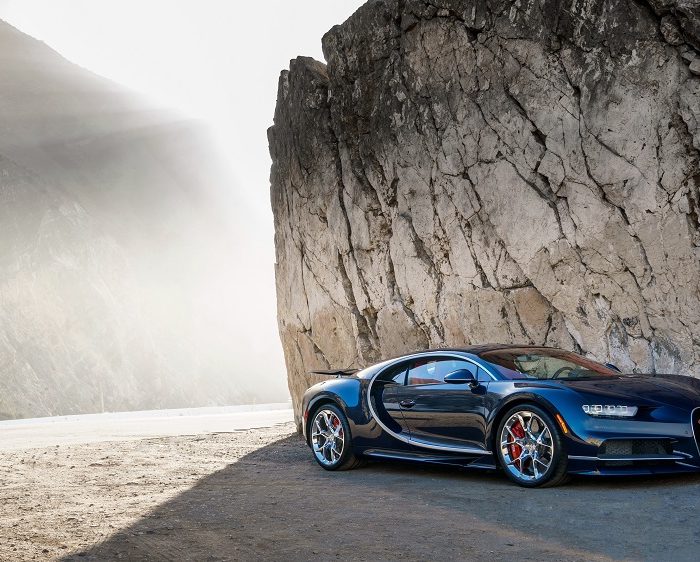When I embarked on this series of retro car tests, I didn’t expect any surprises. After all, it’s clear that a VAZ “nine” outperforms a ’41 Moskvich, and a Volga is hardly manageable. But venturing into the realm of international models proved more revealing. Did you know the Mercedes W123 is a genuine driver’s car, while the classic Mustang is mostly just eye candy? Now, let’s tackle a seemingly predictable duo: the BMW 535i from the E34 series and the Mercedes-Benz E280 from the W124 generation. Expect the unexpected.

Under the Hood and Beyond
The best way to get to know the E34 and W124 isn’t just driving—it’s examining them on a lift. This perspective reveals the most about the design sophistication and investment in each model’s development. Most of these cars now show more wear than you’d expect, highlighting the stark contrasts between them.

It is interesting that based on the M30B35 engine, the fastest sedan in the E34 body – the Alpina B10 Biturbo – was created. A pair of Garrett T25 turbochargers increased the output from 211 to 360 horsepower. Acceleration to “hundred” took just over five seconds, and the top speed reached 290 km/h. It makes one wonder, what was the turbo lag like?
The Mercedes W124 is a textbook example of over-engineering. Its robust construction dates back to 1984, initially inspired by the compact W201 sedan. The W124 features large longitudinal members, substantial subframes, McPherson struts with separated springs and shock absorbers, a sophisticated rear five-link suspension, robust arms, ball joints, a flat underbody, dual elastic couplings on the driveshaft, and hydro mounts for the powertrain. Upon inspecting BMW’s E34, you might question its production dates—could the W124 really predate it by three years? BMW’s setup feels more dated, using simpler technology that wouldn’t see significant updates until the 1990 series debuted.

The interior of the “five,” especially with the three-spoke sports steering wheel, is much more driver-oriented than the chassis settings. The low seating position, thoughtful ergonomics, where you hardly need to take your eyes off the road to adjust the “climate” or audio system. After the facelift, comfortable round knobs were replaced with wheels, like in a Mercedes. And this is the last “five” with window buttons on the central tunnel.

Thirty years ago in Munich, they came to the perfect format for the instruments. And it’s a pity that they later had to deliberately spoil it—look at the drawn scales of the current BMWs. The red zone on the tachometer starts right after 6000 rpm—the M30B35 engine is not fond of spinning.
However, the simpler BMW configuration didn’t stop the M3 E30 from outperforming the Mercedes 190E Evo, suggesting that raw complexity doesn’t always correlate with superior driveability. This is why I’m reserving judgment—for now.
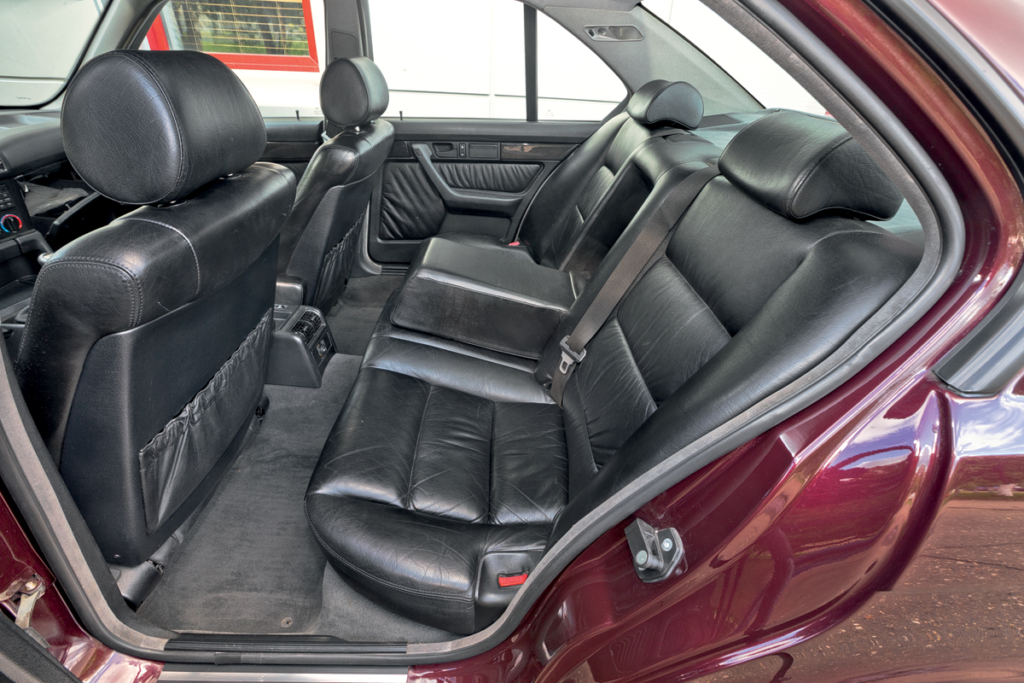
In terms of dimensions, the E34 “five” series practically repeats the current “three” series—as well as the legroom in the back: if you are above average height, don’t count on comfort.

Thirty years ago, smoking was in vogue: there is an ashtray in each rear door, and lighters—both in front and in the back.
BMW 535i E34: Engineering a Classic
The BMW 535i E34, powered by the revered single-cam M30 engine, is often hailed as one of the best “Fives.” To access the engine, a tug on the lever gracefully lifts the front of the hood. The engine’s design, especially the intake manifold that could belong in a design museum, speaks volumes about BMW’s attention to detail. Despite its size—3.4 liters and six cylinders each 92 mm in diameter—the engine’s 208 hp seems modest against its 1607 kg mass (Mercedes stands at 1585 kg). But paired with a five-speed manual and a limited-slip differential, and fresh asphalt beneath, the car’s potential feels renewed.
Yet, is it truly a performer?

The trunk is convenient and large, a couple of signature rubber bands on the floor have survived to this day—just like in my E82 coupe.

There were times when the spare wheel didn’t bother BMW designers.
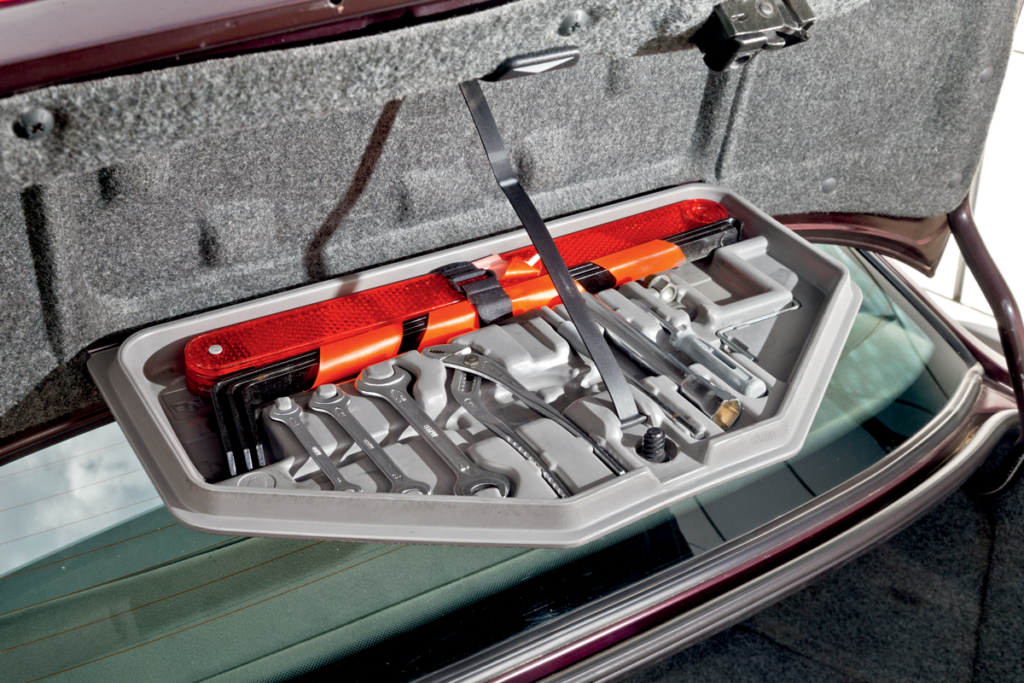
Does your youngtimer have a full set of signature tools? The contents of this chest are a matter of pride for every owner of an old BMW.
Not Just a Car, but a “Tool”
This BMW 535i might be one of the finest examples in the country, restored meticulously over several years to near-original condition. The cabin exudes the scent of rich leather and textured plastics, with snug seats and a dashboard featuring authentically classic gauges—a rare sight in modern BMWs.
The car’s inline “six” purrs deeper at idle than a BMW 740i’s V8. The transmission is unusually precise for a BMW, lacking the typical long throw across the cabin, though the engagement point is subtle. The engine’s torque makes it easy to pull away, but don’t expect thrilling acceleration—this is no modern sports car. Yet, on the test track, the “Five” surpasses its official specs, sprinting to 100 km/h in 7.6 seconds with a top speed of 237 km/h, and maintaining composure even at high speeds.

Don’t be misled by the dramatic shot—the standard E34 resists such driving on dry asphalt.
But there’s a catch. The 535i responds sluggishly to steering inputs. It’s almost as if the car resists quick maneuvers, requiring significant wheel turns to navigate sharp bends. Fast, reactive driving? Not quite its forte. This BMW doesn’t provoke you to push it hard; it’s competent and safe, yet somehow, disappointingly straightforward.
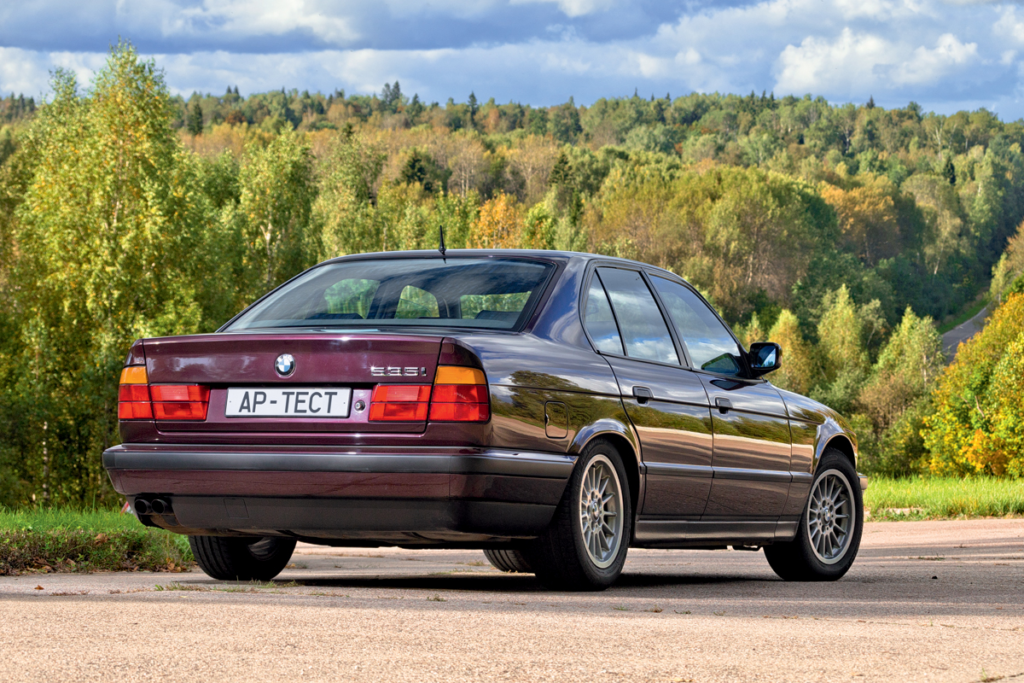
BMW vs. Mercedes: The Intangibles
Against the Mercedes, which I had the pleasure of driving from Moscow to the test track, the BMW feels underwhelming. The Mercedes not only matches but enhances every drive with a sense of security, an aura of nobility, and a mysteriously satisfying frequency of body vibrations that resonate subconsciously with Mercedes aficionados.
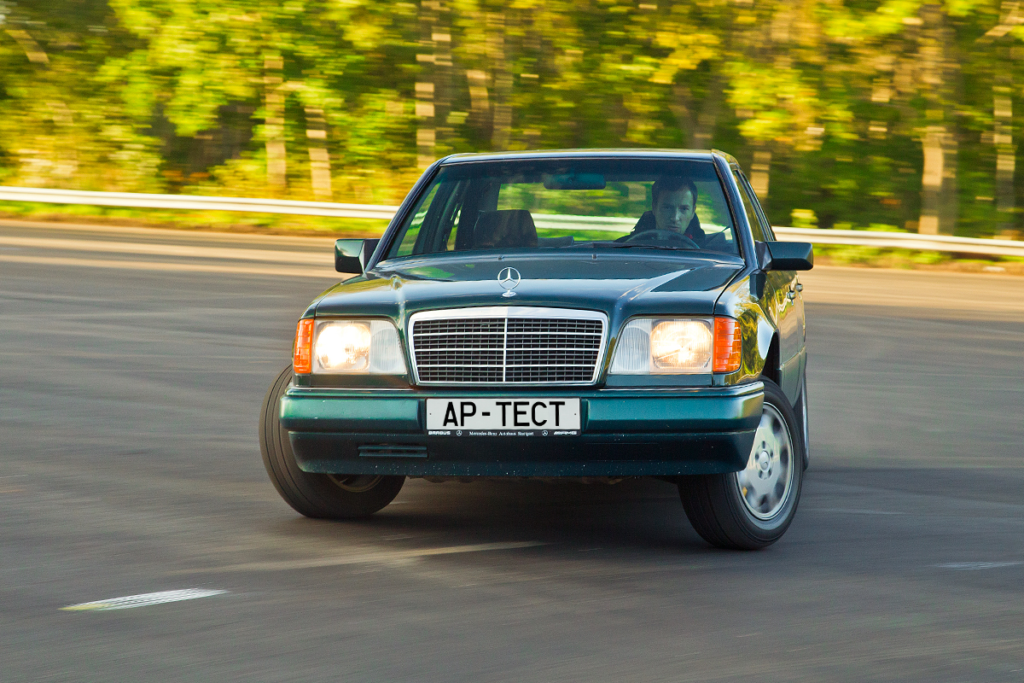
In contrast, the BMW’s interior, despite its technological trappings, lacks the soulful essence that makes the Mercedes so captivating. The E280 doesn’t just move; it glides with a subtlety that makes every journey feel effortless and every mile smoother.
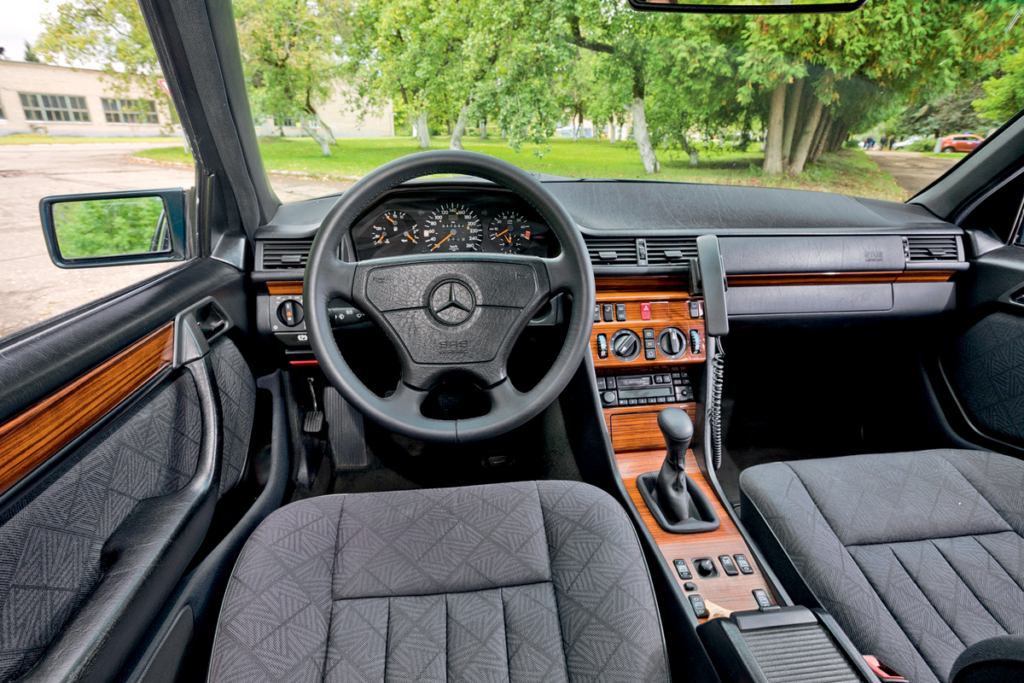
I used to dislike the interiors of Mercedes from that period, but now I appreciate this minimalist style. It’s a pity that good fabrics have disappeared from the cabins of modern E-classes—I think such trim is cozier than leather.
So, as much as it pains me to say, the BMW 535 the E34 might be a marvel of its time, but in this head-to-head, the Mercedes-Benz E280 W124 not only meets the benchmark—it sets it.

Classic instruments with clocks are memorable for their original exterior lighting, as if on a theatrical stage. BMW’s version, where the symbols themselves light up, is certainly more modern, but Mercedes sets a special calming mood on a night road.
Powertrain Prowess and Performance Parity
For an impeccably accurate comparison, I would have ideally sourced a pre-facelift W124 equipped with a single-cam “six.” However, the model at hand is powered by the more advanced 193 hp M104 engine. Though it may lag slightly in standstill acceleration compared to its competitor, this engine’s superior gas exchange process ensures better elasticity, and our Mercedes also features a five-speed manual transmission. Yet, what truly sets the Mercedes’ performance apart is the subtlety of its acceleration—it’s practically imperceptible.

A seat with a spring-loaded cushion and a wide backrest welcomes you like family, but it hardly holds you in turns.

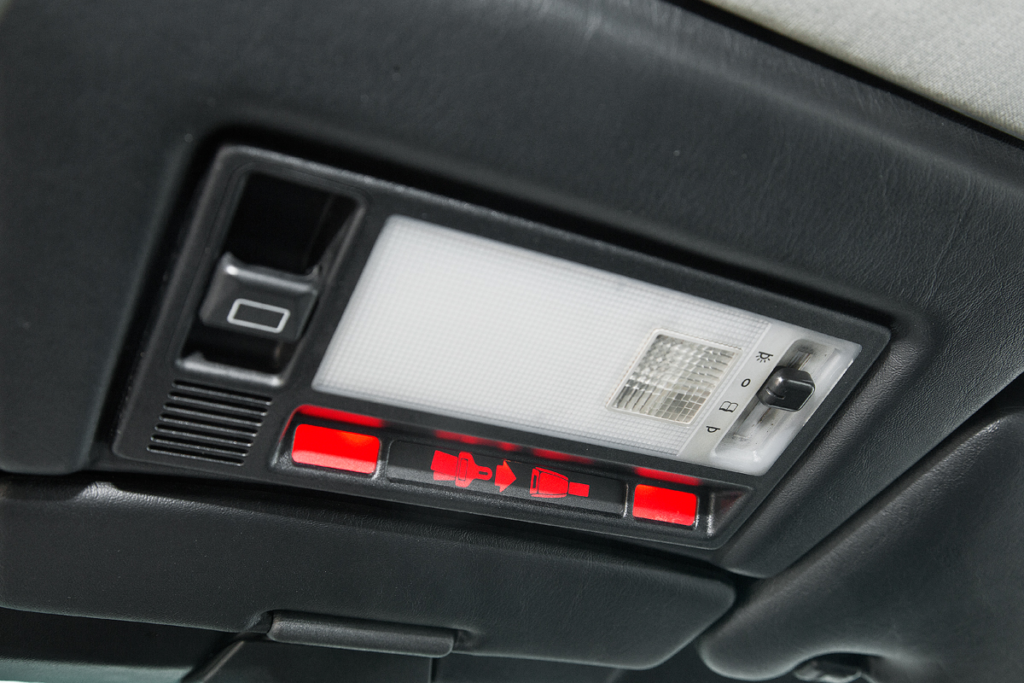
The Stealthy Power of the W124
This Mercedes takes off with incredible smoothness, akin to an electric vehicle. The engine remains virtually silent until it hits 5,000 rpm, and only the tachometer betrays the activity beneath the hood. Each press of the accelerator feels seamless, as if devoid of any mechanical transmission—no gearbox, driveshaft, or differential in sight. Mercedes has mastered the art of masking the mechanical processes, making the driving experience feel less like operating a machine and more like wielding a finely tuned instrument of luxury.
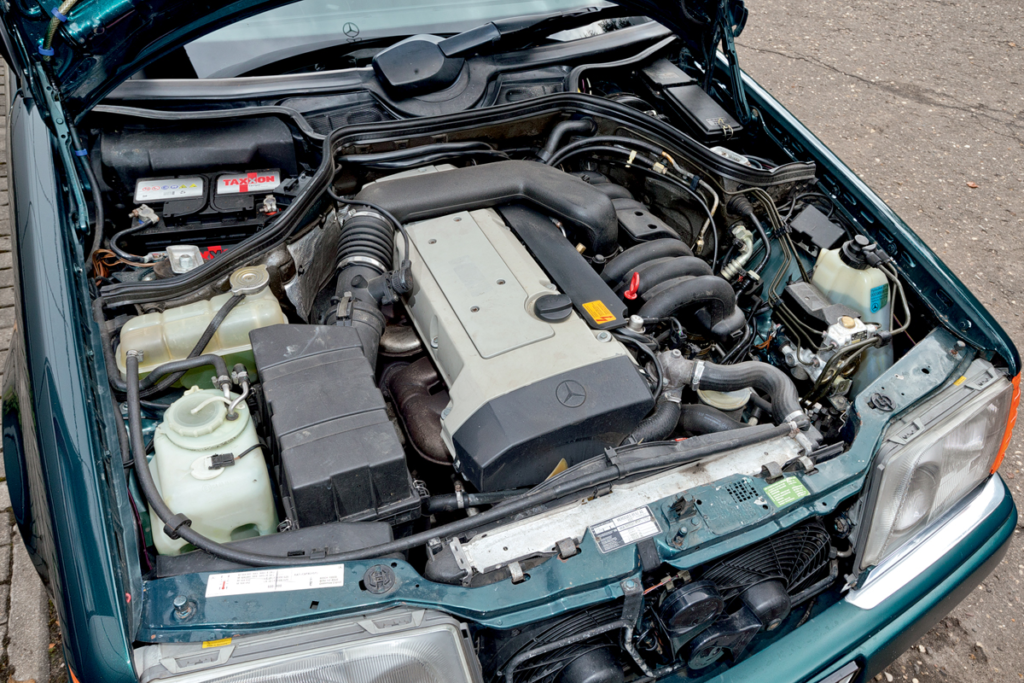
These 24-valve M104 family engines have earned a reputation as some of the most reliable in history. Notice the heater built into the windshield washer reservoir—Mercedes is full of such clever solutions.
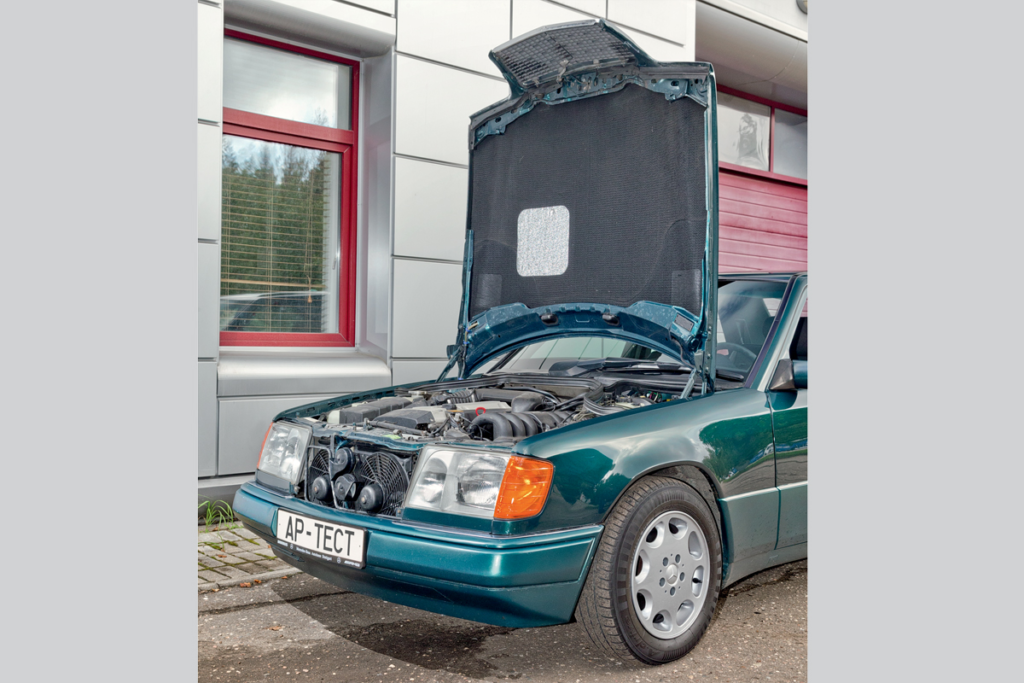
The alligator hood can be raised almost vertically.
However, this smoothness should not be mistaken for a lack of vigor. When needed, the W124 can easily breach the 200 km/h mark and swiftly take the lead at traffic lights. Additionally, its handling feels far more contemporary than that of the BMW.

The height of the sofa, the positioning of the armrests on the doors, the angle of the backrest—all are excellently adjusted. The legroom in the E-class is comparable to a contemporary Camry.
A Study in Steering and Stability
From the first turn of the steering wheel, it’s evident that these vehicles herald from distinct engineering eras. The E-Class is markedly more responsive, with reactions that could rival modern vehicles. The Mercedes’ assertive handling may feel overpowering initially, but it quickly becomes a valued feature, offering precise feedback without compromising on informativeness. Despite significant body roll, similar to the BMW, it doesn’t detract from the car’s trajectory accuracy, thanks in part to its advanced five-link rear suspension which enhances outer wheel engagement.

Innovative Features and Handling Highlights
Our test vehicle was equipped with the optional ASD (Automatisches Sperrdifferenzial), a self-locking rear differential that uses a hydraulic mechanism to enhance traction—particularly effective under 38 km/h. When needed, the differential locks up completely, seamlessly enhancing grip and handling during aggressive maneuvers. This feature exemplifies how the Mercedes effortlessly performs power slides, turning the automotive norms on their head and showcasing its superior handling capabilities.
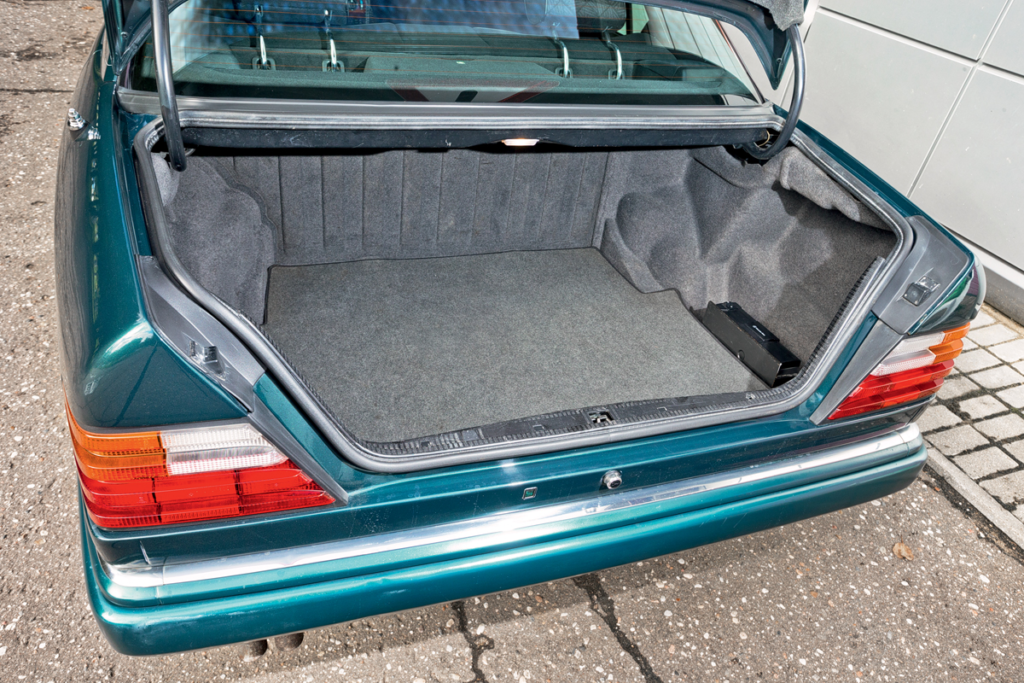
Increasing the volume of this trunk is not possible: behind the backrest, a fuel tank is vertically installed.
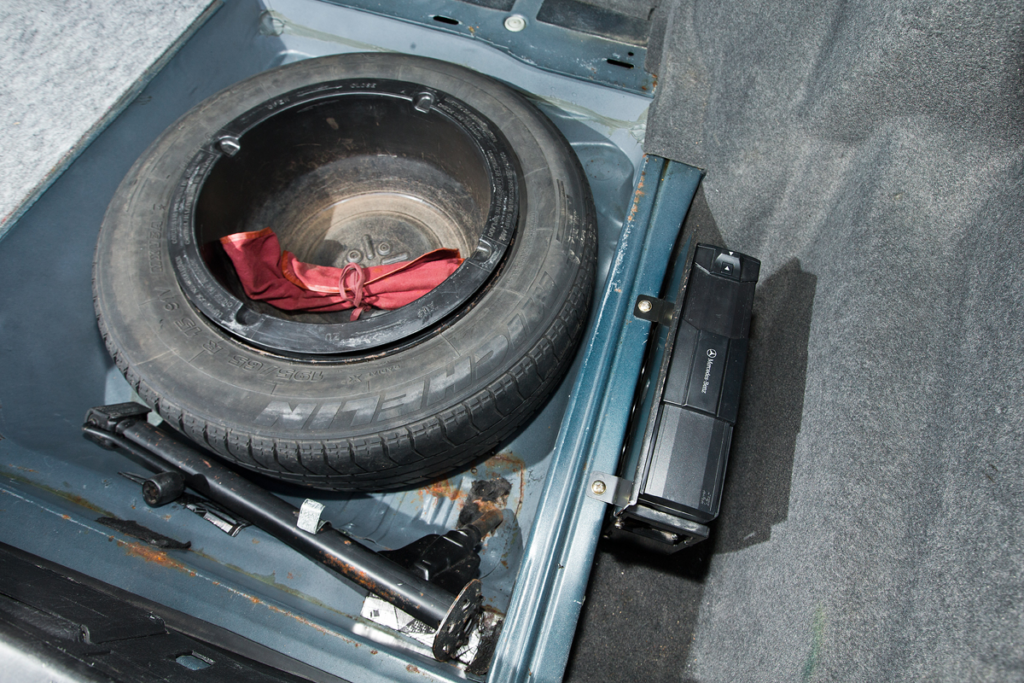
Of course, there is a niche for a full-size spare wheel.

Original dealer documentation is a pleasant bonus to any youngtimer.
Unparalleled Mercedes Comfort
The E-Class doesn’t just excel in performance; it offers an exceptional level of comfort that is distinctly Mercedes. From its plush ride quality to its commendable sound insulation, it sets a high standard. Surprisingly, the BMW’s suspension also performs admirably across uneven surfaces, although it struggles slightly with shorter bumps—a peculiar trait given its generous tire profile.

Conclusion: The Legacy of the W124
Apologies to BMW enthusiasts, but in the 80s, Mercedes reigned supreme—not just over its German counterpart but also over its own subsequent iterations. No later E-Class model has managed to recapture the blend of elegance, performance, and technological innovation that the W124 so effortlessly delivered. Interacting with this car, from the tactile satisfaction of its manual gearshift to the historical significance of its engineering, is a reminder of Mercedes’ golden era. For those seeking a classic that truly represents the pinnacle of past automotive achievements, the W124 is the definitive E-benchmark.
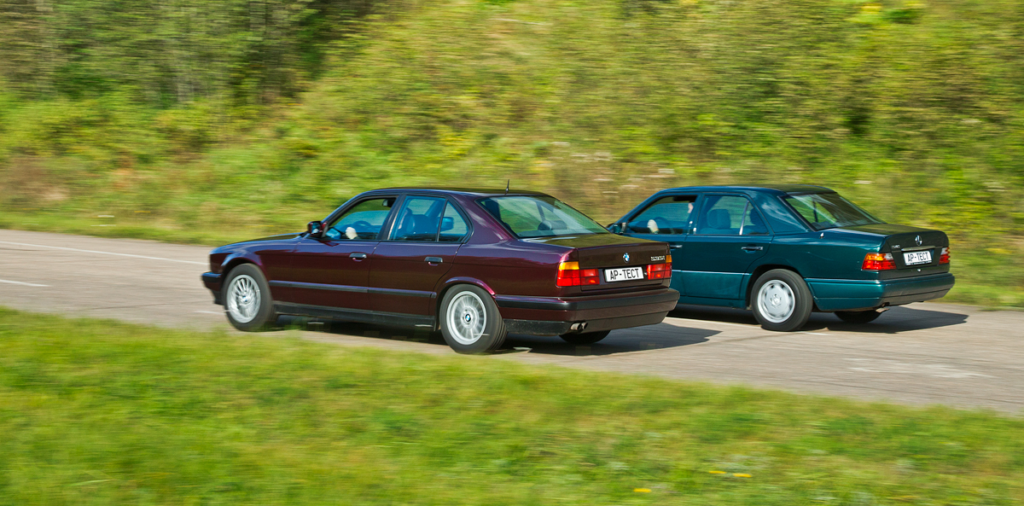
Photo: Dmitry Pitersky
This is a translation. You can read the original article here: BMW 535i серии E34 и Mercedes-Benz E280 поколения W124: кто из них настоящий E-талон?

Published July 04, 2024 • 9m to read



